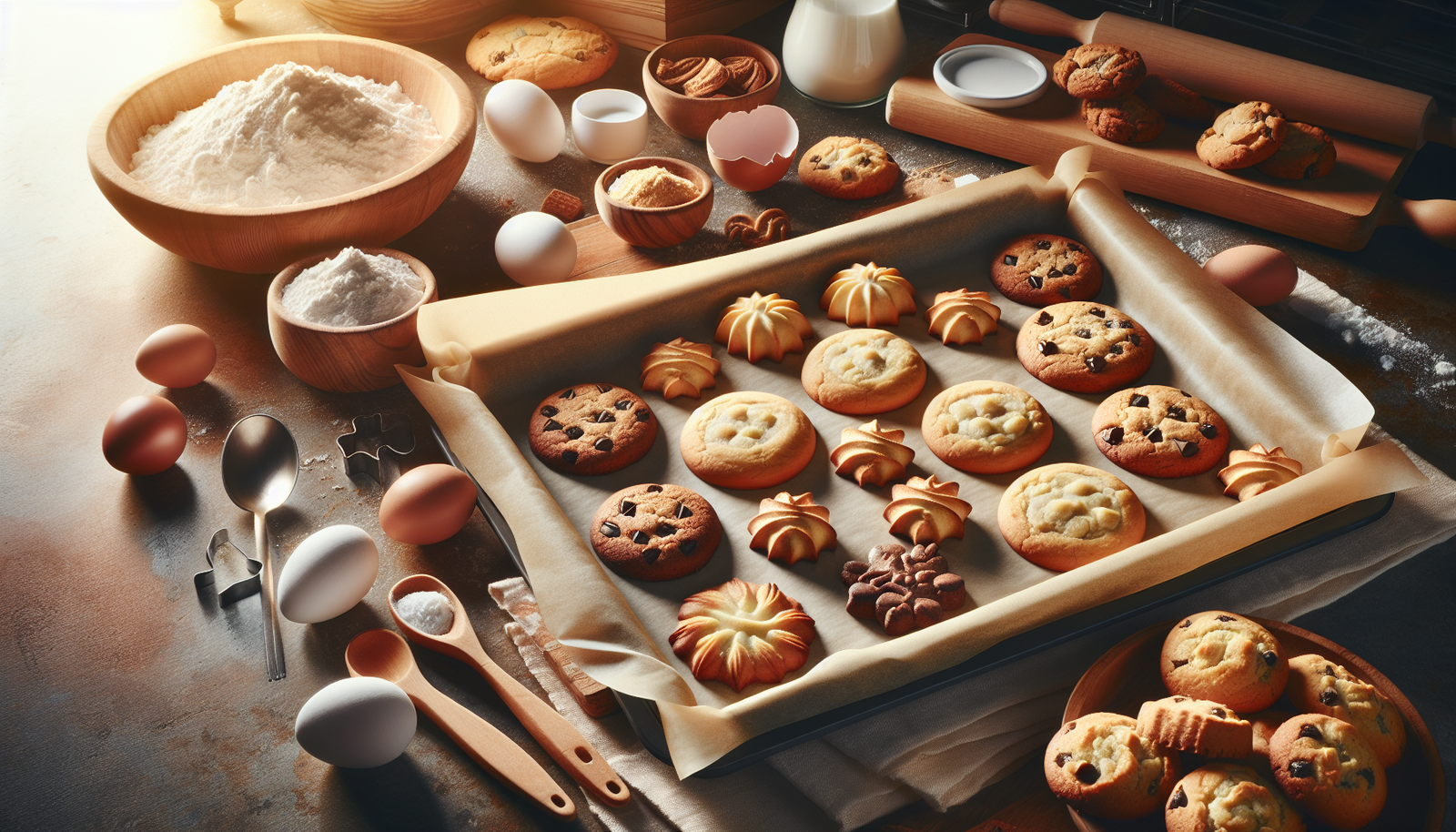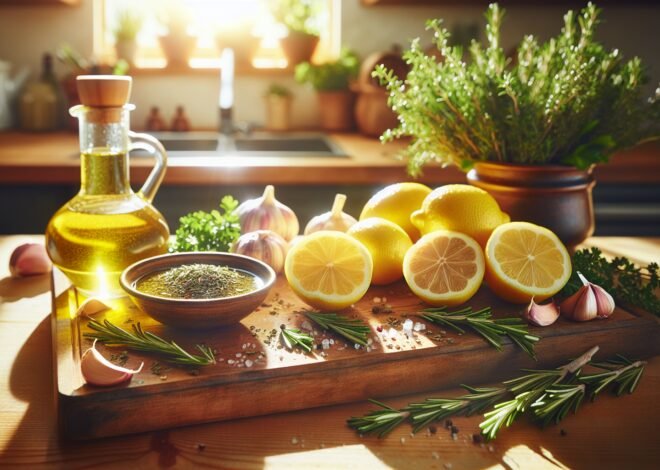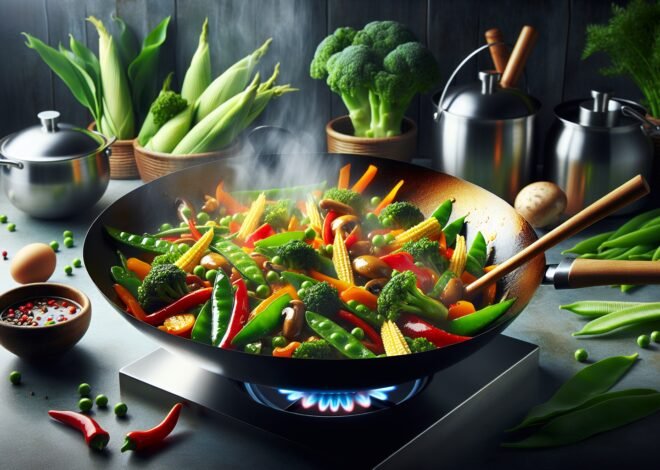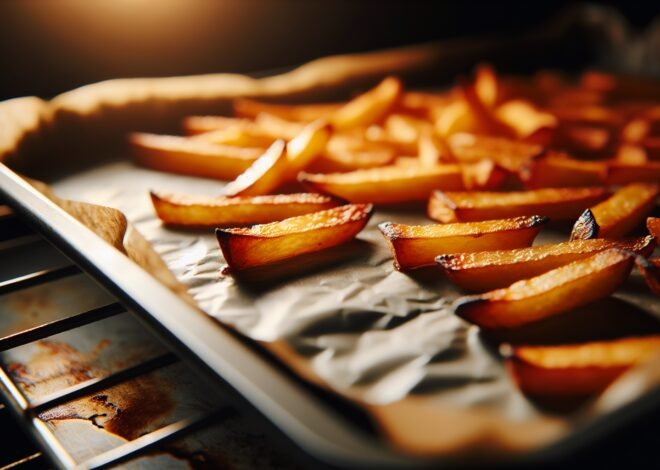
How to Use Parchment Paper for Perfectly Baked Goods
Parchment paper for baking is a kitchen essential that transforms the outcome of your baked goods by preventing sticking and promoting even cooking. Whether you’re an amateur or a seasoned baker, mastering the use of parchment paper can significantly improve your results. This material offers a simple, non-stick solution that enhances your baking experience, saving you the frustration of burnt bottoms and challenging clean-ups. In this guide, we will explore various ways to utilize parchment paper, from lining cake pans to creating custom-sized liners for cookies. Discover how this seemingly simple tool can elevate your baking skills and make your kitchen endeavors more enjoyable.
What is Parchment Paper and Why Use it in Baking
Parchment paper is a staple in many kitchens, especially for baking enthusiasts. It’s a cellulose-based paper that’s been treated with a non-stick coating, usually silicone, to make it heat-resistant and grease-proof. This magical kitchen tool offers numerous advantages that can elevate your baking experience from average to exceptional. Let’s delve deeper into why parchment paper is a must-have in baking.
The Benefits of Using Parchment Paper in the Oven
Using parchment paper in the oven provides a layer of protection between your food and the baking surface. This means your cookies, bread, or roasted veggies are less likely to stick to the pan. The non-stick quality is particularly beneficial for delicate items like macarons or light pastries, which can easily break apart if they adhere to the baking sheet.
Parchment paper also aids in even cooking. It helps to distribute heat more uniformly, resulting in baked goods that are cooked consistently from edge to center. No more burnt edges or undercooked centers. This even cooking is especially crucial for cakes and pastries where precision matters.
Additionally, lining your baking tray with parchment paper can significantly reduce cleanup time. The paper collects drips and crumbs, so you can simply lift it off the tray and discard it. This convenience is not only a time-saver but also helps in maintaining the longevity of your baking equipment by minimizing direct exposure to food residues.
Comparing Parchment Paper with Other Baking Liners
When it comes to baking liners, parchment paper is often compared to wax paper, silicone mats, and aluminum foil. Wax paper, while similar in appearance, is not suitable for oven use because it can smoke and even ignite at high temperatures. Silicone mats, on the other hand, are reusable and non-stick, but they lack the convenience of disposable options and can be bulky to store.
Aluminum foil is another alternative; however, it doesn’t offer the same non-stick properties as parchment paper. Foods can adhere to foil, and it doesn’t provide the same even heat distribution. Additionally, foil can impart a metallic taste to some foods, unlike the neutral flavor of parchment paper.
The versatility of parchment paper extends beyond its non-stick properties. It’s adaptable for use in various baking techniques, from simple cookie sheets to complex cake pans. Its ability to be cut and shaped makes it a flexible option unlike most other liners.
How Parchment Paper Affects the Baking Process
Parchment paper’s role in the baking process can’t be overstated. It acts as a barrier, preventing food from sticking and allowing for more delicate handling of baked goods. This is particularly important for items like pavlovas or meringues, which can crumble under pressure.
The non-stick surface also means you can use less oil or butter in your recipes, leading to healthier baked goods. This is a subtle yet effective way to cut down on unnecessary calories without compromising on taste or quality.
Moreover, parchment paper helps in regulating moisture. When baking items like bread or scones, it allows steam to escape, ensuring a crispy exterior while maintaining a soft interior. This moisture regulation is key to achieving the perfect texture, which is often the hallmark of a well-baked product.
How to Use Parchment Paper for Baking Perfect Results
Achieving baking perfection often involves a few tricks of the trade. One such trick is mastering the use of parchment paper. It’s not just about laying a sheet on a pan; there’s a method to its use that can vastly improve your baking results. Understanding how to work with parchment paper is an essential skill for anyone looking to elevate their baking game.
Properly Cutting and Fitting Parchment Paper for Pans
Cutting parchment paper to fit your pans might seem straightforward, but a little precision goes a long way. Start by measuring the base of your pan. For circular pans, place the pan on the paper and trace around it. Then, cut slightly inside the line to ensure it fits snugly.
For square or rectangular pans, cut the paper to the exact dimensions needed. Leaving too much overhang can cause the paper to shift when filled with batter. If you’re lining a loaf pan, cut the paper into a large rectangle and press it into the pan, allowing the excess to hang over the edges. This makes removing the loaf easier once baked.
Using corners and folds is another technique to ensure a proper fit. Cut slits at each corner of parchment for rectangular pans, then fold and crease to create a neat fit. This prevents batter from seeping under the paper and burning onto the pan.
Tips for Reusing Parchment Paper Efficiently
Parchment paper can often be reused, which is both economical and environmentally friendly. If you’ve used the paper to bake cookies or bread, and it’s still clean, consider using it again for a similar application. Ensure the paper is free from significant grease stains or crumbs before reusing.
For multiple batches of cookies, simply allow the parchment to cool between uses. This prevents any residual heat from affecting your dough’s consistency. Reusing parchment is less advisable for greasy or heavily seasoned foods, as residual flavors can transfer.
Store used parchment paper by folding it neatly and keeping it in a dry place. This way, it’ll be ready for your next baking adventure, reducing waste and saving money.
Ways to Prevent Parchment Paper from Sliding
Sliding parchment paper can be a nuisance, especially when pouring batter or arranging delicate cookies. To prevent this, lightly spray the baking sheet with water or a bit of cooking spray before placing the parchment. This creates a tacky surface that holds the paper in place.
Another method is to fold the corners of the parchment under the pan’s edges. This anchors the paper and keeps it from shifting. Additionally, you can use metal binder clips to secure the parchment to the edges of the pan, though this should be done with caution to avoid interference with the baking process.
For round cake pans, cutting the parchment to fit snugly ensures it remains stationary during baking. Pressing the parchment into the bottom and smoothing it out from the center to the edges can help minimize movement.
Exploring Creative Baking Techniques with Parchment Paper
Parchment paper isn’t just a tool for routine baking; it opens doors to creativity in the kitchen. Its versatility allows bakers to experiment with various techniques, making it a valuable addition to any baker’s toolkit. From cookies to roasting vegetables, parchment paper can transform ordinary recipes into extraordinary culinary creations.
Baking Different Types of Cookies and Pastries
Parchment paper is perfect for baking cookies and pastries, allowing them to slide off the sheet effortlessly. For cookies, the paper prevents spreading by providing a stable surface, encouraging uniform baking. It also helps retain moisture in pastries, preventing them from drying out or burning on the bottom.
The non-stick surface of parchment paper is ideal for intricate cookies like macarons or lace cookies, which require careful handling. Their delicate nature can make removal tricky, but parchment ensures they remain intact.
For puff pastries, parchment paper supports even expansion. This ensures the layers rise uniformly, resulting in a flaky, tender texture. This is key for pastries that rely on precise baking to achieve their signature lightness.
Using Parchment Paper for Roasting Vegetables
Roasting vegetables on parchment paper enhances flavor and texture. The paper acts as a barrier, preventing vegetables from sticking to the pan, which can lead to uneven roasting and burnt edges. It also helps in distributing heat evenly, ensuring each piece is perfectly cooked.
Parchment paper traps moisture, allowing vegetables to steam slightly as they roast. This process results in a caramelized exterior and a tender interior, enhancing the natural sweetness of the vegetables.
For seasoning, toss your vegetables in olive oil and herbs directly on the parchment. This facilitates easy cleanup and ensures each piece is evenly coated. Parchment paper can withstand temperatures up to 450°F, making it suitable for high-heat roasting.
Unique Desserts You Can Make with Parchment Paper
Parchment paper is a game-changer for creating unique desserts. One popular technique is the use of parchment paper for crafting en papillote desserts. This involves wrapping ingredients like fruits and spices in parchment and baking them. The result is a burst of flavor, as the paper traps steam, infusing the ingredients.
Another innovative dessert is parchment paper cupcakes. This involves shaping squares of parchment paper into cupcake liners, adding a rustic touch to your presentation. This technique allows for creativity in sizing and shaping your cupcakes or muffins.
For chocolate work, parchment paper serves as an excellent non-stick surface for spreading and cooling melted chocolate. This method is ideal for creating chocolate decorations or bark, as the paper allows for easy removal once the chocolate sets.
Parchment paper’s versatility and reliability make it indispensable for both everyday baking and creative culinary exploration. Its ability to enhance texture, flavor, and presentation ensures that each baking endeavor is a success.
Conclusion
Parchment paper is a heat-resistant, non-stick paper used in baking. It is used to line baking trays and pans to prevent sticking and make cleanup easier. Unlike wax paper, parchment can withstand higher temperatures in the oven. It is available in bleached and unbleached varieties, with no significant difference in performance. Parchment paper can be reused if not overly soiled after initial use.
FAQ
What is parchment paper and how is it used for baking?
Parchment paper is a grease-resistant, non-stick paper used in baking to line pans and trays. It prevents food from sticking and makes cleanup easier. It’s ideal for baking cookies, roasting vegetables, and more.
Can parchment paper go in the oven and at what temperature?
Parchment paper is oven safe and can typically withstand temperatures up to 420°F (215°C). Check the packaging for specific temperature limits to ensure safety.
How do you prevent food from sticking when using parchment paper for baking?
To prevent sticking, ensure that the parchment paper lies flat on the baking surface. Its non-stick coating generally handles most foods without additional grease, keeping your treats intact.
Is parchment paper safe for baking and what are its health benefits?
Parchment paper is safe for baking as it is non-toxic and heat-resistant. It minimizes the need for additional oils, which can contribute to a healthier baking process.
What are the best alternatives to parchment paper for baking?
Silicone baking mats are a popular alternative, offering a reusable, non-stick surface. Aluminum foil can also be used, though it may require oiling to prevent sticking.
How can I use parchment paper to improve baking results?
Using parchment paper can lead to even baking and browning while preventing overcooking. It also makes transferring baked goods from pans smooth and efficient.











